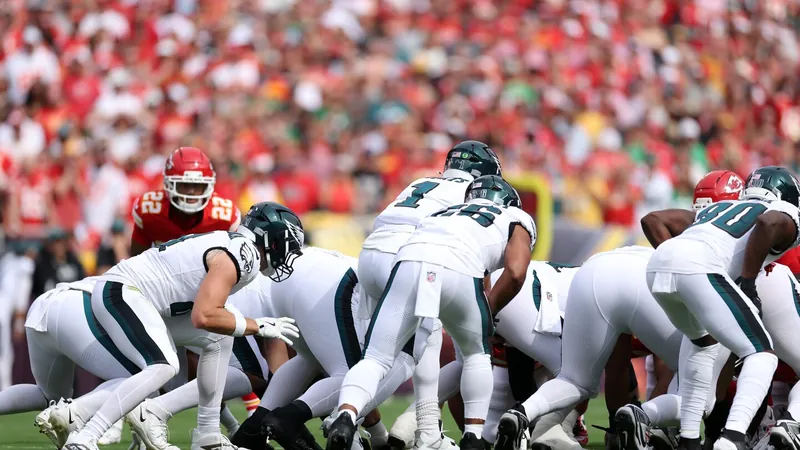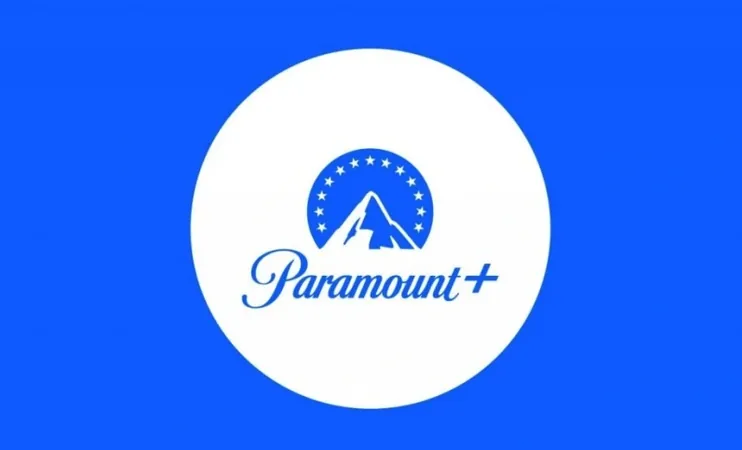
Ozempic Lawsuits: The Alarming Truth Behind Vision Loss Claims
2025-09-16
Author: Jia
If Ozempic were to win an award for the "Drug of the Summer," it would claim the title without competition. Initially designed to combat type 2 diabetes, this medication, known scientifically as Semaglutide, has skyrocketed to fame for its astonishing weight loss results.
However, with its popularity has come a wave of scrutiny. Novo Nordisk, the drug's manufacturer, is now confronted with a tidal wave of lawsuits claiming a range of severe side effects, including a shocking allegation of irreversible vision loss.
The Surge of Ozempic Lawsuits
In 2024 alone, they faced a flurry of individual lawsuits, with a Multidistrict Litigation (MDL) established to manage these claims efficiently. By August 2025, the number of active cases related to Ozempic and similar drugs had exploded to over 2,190, with accusations that Novo Nordisk failed to warn patients adequately about severe side effects.
Vision Loss: The Center of Controversy
Initially, many lawsuits focused on gastric issues, yet a concerning trend has emerged linking Ozempic to Non-Arteritic Anterior Ischemic Optic Neuropathy (NAION), a rare eye condition. A study published in July 2024 indicated a significant connection between using Ozempic and an increased risk of NAION, raising alarms among medical professionals.
As stories of severe vision impairment came to light, the stakes for Novo Nordisk grew dramatically. While gastrointestinal side effects can often be managed, NAION poses a risk of permanent blindness, deeply impacting victims' lives and making their stories resonate with juries.
What Patients Are Experiencing
Firsthand accounts from plaintiffs underscore the gravity of the situation. James Norris, a mechanic, found himself diagnosed with NAION after his dosage increased. Meanwhile, Cheryl Bovee, a North Carolina retail worker, described heartbreaking losses: "I can’t see my grandchildren’s faces clearly or live independently anymore. All my hopes and dreams have been dashed."
Such personal narratives starkly contrast the celebrity-driven promotions that once painted Ozempic as a miraculous weight loss solution.
Is There a Definitive Link to Vision Loss?
While studies have hinted at a correlation between Ozempic and severe eye conditions, establishing a direct cause-and-effect relationship remains contentious. Researchers note that diabetic patients are already at risk for NAION. However, the alarming frequency of cases observed among Ozempic users, particularly those who are overweight, adds a troubling dimension to this discussion.
Legal Ramifications and Responsibilities
Most of the Ozempic lawsuits are organized under MDL 3094, where the primary allegation is that Novo Nordisk neglected to adequately inform patients and doctors about the drug's dangers. Anticipating these legal challenges, the company is likely to invoke defenses, arguing that they fulfilled their obligation once they informed prescribing physicians.
High-Stakes Legal Showdown Ahead
As the number of lawsuits continues to soar, economists estimate that Novo Nordisk could face over $2 billion in potential payouts. The introduction of NAION-related cases into the mix has transformed these lawsuits into a litmus test for corporate accountability in the pharmaceutical industry.
Novo Nordisk's Response
In light of the mounting pressure, Novo Nordisk has launched counterstrategies, disavowing wrongdoing and emphasizing that many of the issues stem from misuses that fall outside the parameters of prescribed use. Additionally, they are taking legal action against unauthorized sellers of their products.
A Cultural Shift in Medical Use
Ozempic's transition from a diabetes treatment to a cultural phenomenon has spurred critical discussions about drug use and safety. The explosive demand, largely fueled by influencer hype on social media, underscores the risks associated with mass adoption of medications not fully vetted for such widespread populations.
As these lawsuits unfold, they highlight a crucial conversation about balancing the benefits of medications against their potential long-term risks, underlining how the rush for quick fixes can sometimes unveil hidden dangers.
Conclusion
While the legal battle continues, the testimonies of those affected by Ozempic and the revelations of vision risks serve as a powerful reminder of the complexities involved in pharmaceutical practices and patient safety. As patients and their stories take center stage, the outcome of these lawsuits may well redefine accountability in the healthcare industry.




 Brasil (PT)
Brasil (PT)
 Canada (EN)
Canada (EN)
 Chile (ES)
Chile (ES)
 Česko (CS)
Česko (CS)
 대한민국 (KO)
대한민국 (KO)
 España (ES)
España (ES)
 France (FR)
France (FR)
 Hong Kong (EN)
Hong Kong (EN)
 Italia (IT)
Italia (IT)
 日本 (JA)
日本 (JA)
 Magyarország (HU)
Magyarország (HU)
 Norge (NO)
Norge (NO)
 Polska (PL)
Polska (PL)
 Schweiz (DE)
Schweiz (DE)
 Singapore (EN)
Singapore (EN)
 Sverige (SV)
Sverige (SV)
 Suomi (FI)
Suomi (FI)
 Türkiye (TR)
Türkiye (TR)
 الإمارات العربية المتحدة (AR)
الإمارات العربية المتحدة (AR)